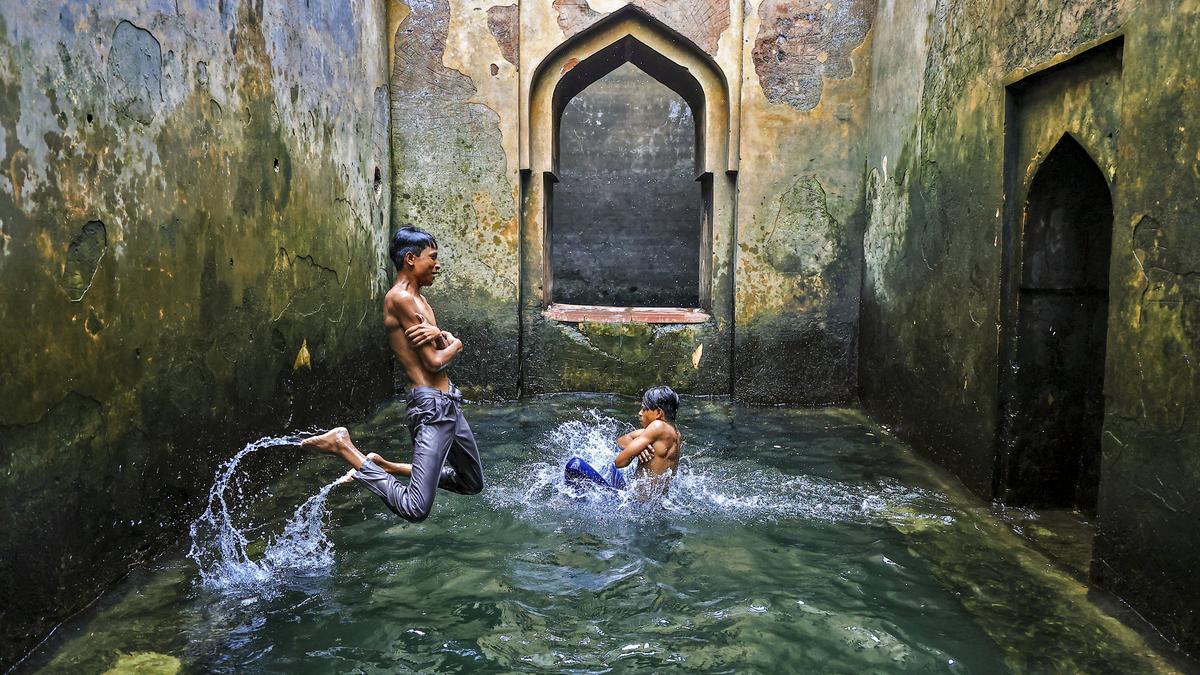Young men cool off in a step well amid scorching weather on a hot summer day in Rajasthan
| Photo Credit: –
Over the last 10 years, traditionally cooler cities such as Bengaluru and Mumbai have been experiencing more days with above-average temperatures than Delhi, as India grapples with increasingly severe heatwaves. A comparison of daily maximum temperatures from 2015 to 2024 against the World Meteorological Organization’s standard 1991-2020 climatological baseline provides a stable measure of heat anomalies.

The most striking results come from Bengaluru, which has always been known for its moderate climate. During summer (April-June) 2019, Bengaluru recorded 86 days where maximum temperatures exceeded the long-term average — the highest among all the metros analysed (Chart 1).
In granular terms, the averages for maximum temperatures in for Bengaluru in April, May, and June between 1991 and 2020 were 35.34°C, 34.71°C and 31.7°C, respectively (Table 1).
Cumulatively in these months in 2019, the long-term average was exceeded during 86 of the 91 days. The city also experienced significant heat during the summers of 2017 (67 days) and 2023 (66). This trend continued into the monsoon season, with the city experiencing 81 above-average days in 2015 and 72 above-average days in 2023.

Mumbai also had intense summer periods in 2016 and 2018, with 69 above-average days each year. During the 2015 monsoon season, Mumbai recorded 72 such days (Chart 2).
While Delhi faces extreme heat, it often has fewer above-average temperature days than these metros. Its most intense summer was 2022 when 69 days were above baseline. (Chart 3).
Kolkata consistently shows high numbers of warmer-than-average monsoon days. This peaked at 74 days in 2020 (Chart 4).
Source: Data accessed by Pratiman Patel from LWCC.in team from the IMD’s gridded dataset. It also includes The Hindu’s calculations
Also Read: Liver disease data hints at why related deaths are rising in india
Published – July 03, 2025 08:00 am IST
